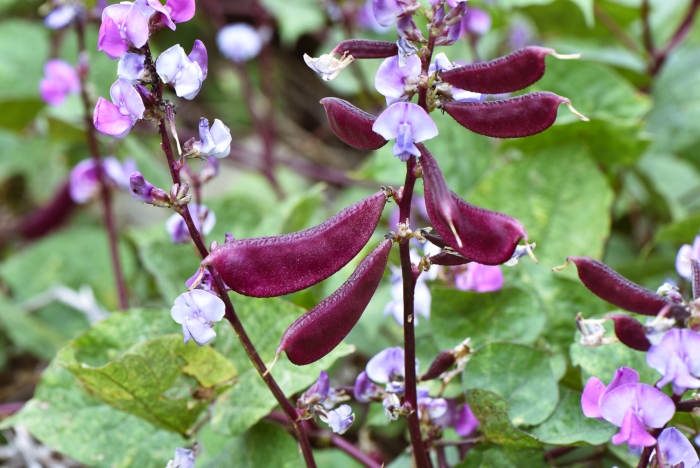Hyacinth Bean
(Lablab purpureus)
Hyacinth Bean (Lablab purpureus)
/
/

Cheng-Tao Lin
CC BY 4.0












































Estimated Native Range
Summary
This vine is valued for its ornamental flowers and pods, which add a tropical flair to gardens. It is often used for trellises, arbors, and fences, providing quick coverage and vertical interest. Hyacinth Bean is relatively easy to grow, requiring full sun to part shade, regular watering, and well-draining soil. It is also drought-tolerant once established. While it is not typically prone to serious diseases or pests, it can suffer from root rot in poorly drained soils. In some regions, it can become invasive, so gardeners should monitor its growth and remove seed pods to prevent unwanted spread.CC BY-SA 4.0
Plant Description
- Plant Type: Vine, Herb
- Height: 10-20 feet
- Width: 3-6 feet
- Growth Rate: Rapid
- Flower Color: Pink, Purple, White
- Flowering Season: Spring, Summer
- Leaf Retention: Deciduous
Growth Requirements
- Sun: Full Sun, Part Shade
- Water: Medium
- Drainage: Fast, Medium, Slow
Common Uses
Bee Garden, Bird Garden, Butterfly Garden, Drought Tolerant, Edible*Disclaimer: Easyscape's listed plant edibility is for informational use. Always verify the safety and proper identification of any plant before consumption., Erosion Control, Fragrant, Hummingbird Garden, Showy Flowers
Natural Habitat
Originally from warm temperate to tropical regions of Africa and South Asia, thriving in open woodlands and bushland
Other Names
Common Names: Banner Bean, Black Bean, Bonavist Bean, Hyacinthbean, Lablab Bean, Lablab-Bean, Egyptian Kidney Bean, Indian Bean, Dolichos Bean, Seim
Scientific Names: , Lablab purpureus, Dolichos purpureus, Dolichos benghalensis, Lablab niger subsp. bengalensis, Lablab nigra,
GBIF Accepted Name: Lablab purpureus (L.) Sweet